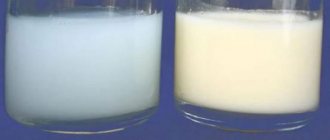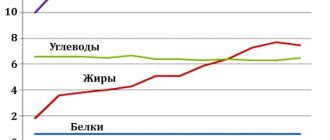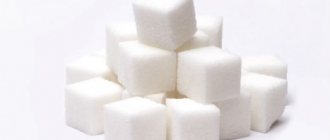It is so laid down by nature that breastfeeding at the birth of a baby is a natural and harmonious development process for children of more than one year of life. Without a doubt, this is a powerful bond between mother and baby.
Milk in the mother’s breast may appear from the first minutes after the birth of the baby, or it may only appear on the 3rd day (this most often happens when a caesarean section was performed).
Don't worry, in any case, first there will be colostrum, which is also suitable for feeding from the first days of a newborn's life.
There are cases when, due to certain life factors, nursing mothers experience a decrease in lactation or, even worse, milk disappears altogether. Then the baby stops being satisfied with food, and young mothers begin to panicky search for all sorts of options for substitutes for the mother's dairy product. First, you need to calm down and pull yourself together, then seek help from specialists who will suggest safe and proven ways to return and stimulate the resumption of breast milk for the baby.
Factors influencing the reduction and cessation of lactation
The percentage of young women who have primary manifestations of lack of breast milk is not so high - about 5-7%. Most often this is due to any hormonal disorders in the female body system. A natural and natural process introduces into the female body’s system the obligatory production of breast milk product for the feeding and development of the newborn. In the field of pediatrics, experts have conducted a lot of research and are ready to answer why a nursing mother’s milk disappears. Here are some of these reasons:
- many mothers program themselves to lack maternal secretions in order to consciously refuse natural feeding;
- the presence of postpartum depression, psychological stress and nervous breakdowns;
- consequences of a cesarean section;
- improper diet of the mother;
- insufficient amount of fluid consumed during pregnancy and lactation;
- putting the baby to the mother’s breast not according to the baby’s needs, but hourly at a decent interval;
- introduction of crumbs of complementary feeding into the daily diet;
- regular supplementary feeding of the baby with an artificial formula;
- physical fatigue and lack of sleep, etc.
Read also:
Why milk leaks and which pads are best for breastfeeding
The process of reducing or completely stopping the production of breast milk product can occur at any time and very suddenly. In medicine, this is called a lactation crisis, when a woman’s body is unable to immediately adapt to the increased needs of the baby. In general, lactation crises can appear after the first month of a baby’s life, most often in the third, sixth and eighth months of breastfeeding. In order to prevent this from happening, mommy should remember one important rule - put the baby to the mother’s breast as often as possible and under no circumstances immediately panic. Otherwise, mother's milk may disappear altogether, and nothing will bring it back, and then the baby will have to be fed with an artificial formula.
Basic ways to stop lactation
Breastfeeding has a beneficial effect not only on the baby, but also on his mother. Natural breastfeeding allows a woman to improve the functioning of her hormones, especially if breastfeeding proceeds without problems. Any mother wants to end this important stage of life as carefully as possible, without severe shocks for the child and without pain and an overfilled breast for herself. There are many ways to conveniently interrupt lactation:
- gradual cessation of lactation
- abrupt weaning (at one moment)
- natural way of weaning
- taking medications that suppress lactation
- drinking herbal infusions
- traditional methods
So, what can you do to stop your breast milk from disappearing?
It is quite possible to stop lactation in a natural way without drinking certain teas, medications, without bandaging the chest, etc. This method is the most painless for both mother and child.
It is possible to suppress lactation naturally under certain conditions.
- A certain age of the child. The closer he gets to the age of three, the more the mother’s milk changes its composition and becomes similar to colostrum. At the same time, the child begins to eat more regular, adult food, he needs less and less milk, so it begins to be produced in much smaller quantities, and the breasts no longer swell.
- The presence of a sucking reflex. In a three-year-old child, the nervous system becomes more developed: the sucking reflex completely fades away, so the baby no longer wants to attach to the breast.
- Breast condition. You can only finish feeding this way if she is not too full.
It is much easier to complete feeding when the baby and mother sleep separately. Even if the baby wakes up at night and asks to be breastfed, he needs to be fed something else and put back into his bed.
It is not always possible to stop feeding your baby milk gently and painlessly: both mother and child can suffer from this. So, what to expect after stopping breastfeeding?
- The child may experience severe stress, especially with sudden weaning. He may lose his appetite, refuse to eat, feel unwell, or get sick.
- Congestion may begin in the chest. If they are not identified and eliminated in time, this will lead to inflammation of the breast, possibly the appearance of pus, which can penetrate into the blood, which is dangerous for the woman’s life.
We invite you to familiarize yourself with: Carrel’s healthy diet with milk menu for heart failure
Therefore, some experts recommend feeding a child milk until the age of three - during this period the child can already fully consume adult food, his sucking reflex will completely disappear, and his nervous system will finally mature, which will allow him to quietly complete lactation.
The most important thing that a nursing mother should know about lactation involution is that it is impossible to quickly and completely remove milk. It is desirable that it decreases little by little. Only after a sufficient amount of time is it possible to completely stop its release.
You especially can’t believe the words of “experienced” mothers who advise breast tightening. Bandaging the breasts will not be able to stop its production, but at the same time it will provide the woman with the occurrence of congestive processes and mastitis. Also, breast constriction can lead to injuries and poor circulation.
The most effective method is to gradually wean the baby from the breast. This will help a woman effectively and easily plan to stop lactation at home without the baby suffering and without chest discomfort.
A few rules will help you organize this process conveniently.
- Under no circumstances should you stop feeding if the child is sick, vaccinated, teething, changing environment, moving, etc.
- You should choose a medicinal method to end breastfeeding only as a last resort (miscarriage, inability to breastfeed, etc.).
- You should not smear pepper, mustard, or anything bitter on your breast so that the child gets scared and doesn’t want to touch it anymore. These substances can get into the stomach, cause a burning sensation in the child, burn the skin, get into the eyes, or simply frighten him greatly.
- It is most effective to gradually replace breastfeeding with regular meals. This takes more time, but it is effective in reducing the amount of milk produced and weaning the baby off the breast.
- It is better to get rid of milk at the moment when the child’s digestive system is ready to digest regular food.
The choice of method for suppressing lactation largely depends on the age of the child. It is impossible to choose one universal method that is suitable for both newborn babies and a two-year-old child.
Newborn babies up to six months are not yet aware of their attachment to the breast, so it is easiest for them to be transferred to feeding from a bottle.
- First, you need to create a regimen that will include the times of all feedings.
- Find out the amount of formula required for the child during the day and at one feeding.
- Once every 3 days, one breastfeeding must be replaced with formula.
- It is worth maintaining natural feeding until it is clear that the baby tolerates the formula well.
- If your breasts are very full, you can reduce milk production using folk remedies.
From 6 to 18 months
The advantage of this period is that the child is already actively trying baby food and switching to adult food.
- Interruption of feeding should not be shocking, so the process must be “stretched out” for a month, or, in extreme cases, not two weeks.
- It is advisable not to replace the breast with a bottle, as the baby may become too attached to it. It is advisable to give your child water from a baby cup or sippy cup.
- It is not necessary to feed your baby formula milk often. The older the child, the less he needs it.
- The next feeding can be replaced with a wide variety of dishes, since the child is already accustomed to porridge, kefir, cottage cheese, fruit, vegetable and meat purees.
We suggest you read: Parsley decoction for weight loss: reviews
After 18 months, the child already eats regular food, but dependence on the breast begins on a psychological level. Therefore, the baby actively opposes excommunication.
- Weaning should be spread out over several months (at most, a month).
- One feeding every three days is replaced with regular food.
Signs of deficiency and absence of breast milk
Before you start worrying, you should understand what symptoms may indicate a decrease in lactation and why a nursing mother may lose breast milk. Main features:
- within a month the child does not gain much in total body weight (less than 500 grams);
- the baby behaves restlessly (is naughty, often cries, sleeps poorly and does not want to play);
- a clear decrease in the daily amount of maternal milk product;
- the presence of a small number of urinations in the newborn (less than 8 times a day);
- the presence of changes in the baby’s stool regarding their type and quantity per day;
- There is such a phenomenon as prolonged suction of the baby to the mother's nipple.
All of the above manifestations indicate that the baby does not have enough maternal food. A nursing mother should be more attentive to restoring and increasing lactation at the time of subsequent feedings.
Calmness and confidence are the best helpers
It is very important for a nursing mother to have the right mindset for breastfeeding. Very often, in order to have enough milk, you just need to avoid overwork, stress, and negative emotions. The environment should be calm, and it is better for the mother to relax and completely switch to the feeding process.
Normal lactation is promoted by a certain hormone – oxytocin. Its production in a woman’s body is closely related to her emotional state. The calmer the mother is while putting the baby to the breast, the more oxytocin is released into her blood. It is necessary to ensure that the mother is comfortable during feeding and that nothing distracts her.
When breastfeeding, close contact with the baby is very important. It is better for the mother to sleep with the newborn or move his crib as close to her as possible. During the day, it is necessary to pick up the baby more often, put him to the chest, talk, and lull him to sleep.
At these moments, a strong emotional connection between mother and child is established, the level of oxytocin in the body increases, and a lot of milk is produced in the breast.
In order for lactation crises to pass as unnoticed as possible, a nursing mother needs to adhere to simple rules.
To increase milk volume you need:
- refuse formula bottles and pacifiers;
- make sure that the baby is correctly attached to the breast with an accurate grip of the nipple and areola;
- alternately apply the baby to the right and left breast;
- drink a warm, sweet drink before feeding;
- do a circular chest massage to help relieve tension;
- monitor your diet - it should be high in calories and healthy;
- drink as much liquid as possible - tea, juices, compotes;
- do not give your baby enough to drink - breast milk not only fills you up, but also quenches your thirst;
- add lactation-stimulating foods to your diet, such as fennel, cumin, cheese, walnuts;
- maintain the correct daily routine, consistently alternating walks, sleep, feeding, and keeping the child awake;
- pump periodically.
If the baby is properly latched to the breast and fed on demand, there is no need to pump to stimulate lactation.
Of course, the period of breastfeeding in the life of every mother is a rather difficult time. But all the problems are temporary, soon lactation will stabilize, and the mother will not need to do anything to maintain it.
The main thing is to get in the right mood, be calm, relaxed and confident in your abilities.
We suggest you read: Milk is decreasing, what to do?
The process of breastfeeding is a woman’s natural destiny, which brings her many bright and joyful moments. These are unforgettable moments of happiness, harmony, privacy with the child and an invaluable period of tender motherhood.











